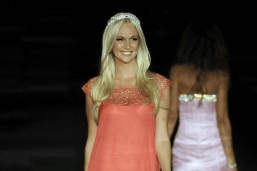Ballerina Anna Pavlova (1881 – 1931), born Anna Matveyevna Pavlovna Pavlova, is one of the most famous and influential ballerinas of all time. She was born in St. Petersburg in February 1881 during the cold Russian winter. At the age of 10, she reached her youth goal of becoming a ballet dancer and was admitted as a student at the Imperial Ballet School in St. Petersburg, Russia (now known as Vaganova Ballet Academy). As an ambitious and dedicated student, Anna knew that a successful ballet career would require a lot more than just talent and a natural gift for dance, combined with an untiring work ethic. Hence, she participated in extra lessons with noted and famous teachers, e.g., Pavel Gerdt, Nikolai Legat, not to mention the esteemed Enrico Cecchetti, who is considered the founder of the Cecchetti method and one of the greatest ballet virtuoso of the time. The ballet master Marius Petipa and Anna’s primary teachers quickly recognized her extraordinary gift, and subsequently, in 1899, Anna graduated from the St. Petersburg Imperial Ballet School at the age of 18 – gracefully moving from school to stage in her hard-earned transformation from ballet student to prima ballerina in the making.
In 1905 Anna Pavlova was already an acclaimed ballerina when Ballets Russes choreographer Michel Fokine choreographed the solo “The Swan” (known today as The Dying Swan) especially for her. The ballet is danced to Le Cygne from The Carnival of the Animals by Camille Saint-Saëns and is primarily composed of bourrées and soft undulations of the arms as techniques. Pavlova’s sheer dramatic intensity conveyed the feelings of the ballet theme to the audience with great skill. Thus, her performance and the ballet became an instant success and, over time, her signature role. After the success, Pavlova desired more artistic independence and better working conditions, but these wishes led to disagreements with the company management. This inspired Pavlova to seek out touring opportunities and new possibilities in her career. In 2007 she set out on her first European tour, which was a great success. The tour visited capital cities throughout Europe, including Berlin, Copenhagen, and Prague. Only two years later, in 1909, the renowned Ballets Russes impresario Sergei Diaghilev hired her to dance in the first Ballets Russes season in Paris, partnered by Vaslav Nijinsky. Pavlova’s fellow dancers in the company also included famous ballet dancers like Olga Spessivtzeva, Laurent Novikoff, Alexander Volinine, and Thadee Slavinsky.
While on tour, the Ballet Russe and Anna Pavlova frequently visited Australia and subsequently played a significant role in Russian ballet’s impact on Australian dance in the future to come. Pavlova toured the United Kingdom and the U.S. during 1910. Her dance debut in New York City was an eye-opening moment for the American ballet, and Pavlova’s performance sparked a new interest in and respect for the art form. Her more notable dance partners included Pierre Vladimirov and Laurent Novikoff when she wasn’t dancing solo. Furthermore, in 1911, the touring experiences gave her the confidence to leave Ballet Russe and take a major step to form her own ballet company featuring herself as a solo artist. As a result, Pavlova could finally retain complete creative control over performances and choreography. Her ballet company performed throughout the world, with a special repertory consisting primarily of her former ballet master Petipa’s works’ abridgments and specially choreographed ballet pieces for herself. She toured with her ballet company as a solo dancer and artist for twenty years until her death in January 1931, as little girls watched her dance in awe and became excited and inspired to become dancers. The exact same way she had been at the Mariinsky Theatre many years ago.

















